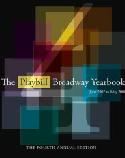SITE GUIDE
SEARCH
REVIEWS
REVIEW ARCHIVES
ADVERTISING AT CURTAINUP
FEATURES
NEWS
Etcetera and
Short Term Listings
LISTINGS
Broadway
Off-Broadway
NYC Restaurants
BOOKS and CDs
OTHER PLACES
Berkshires
London
California
New Jersey
Philadelphia
Elsewhere
QUOTES
TKTS
PLAYWRIGHTS' ALBUMS
LETTERS TO EDITOR
FILM
LINKS
MISCELLANEOUS
Free Updates
Masthead
A CurtainUp Review
New House Under Construction
By Elyse Sommer
|
Decisions we have to make sometimes—when we're not really old enough to make them—can ruin lives. Unless there is great love..—Manny
|
Naturally with three theaters presenting a constantly changing lineup of shows, there are bound to be misses as well as hits. That brings me to New House Under Construction. The advance promotional literature for this five character world premiere written and directed by Alan Hruska was filled with promise. However, while it's intriguing enough initially, viewers may quickly find themselves irritated by the endless blackouts to the point of not caring where the psychological puzzle the playwright has constructed is going.
Mr. Hruska, like Trevor, one of the play's leading characters, has worn multiple career hats — litigator and partner in a well-known law firm, founder of a book publishing firm, novelist, playwright and director. Unfortunately, while the dynamics of the relationships of people who've known each other since childhood is intricately unraveled all the tricks the multi-talented Hruska has up his sleeves revolve around a disappointingly old-fashioned sin and repent plot point and a somewhat confusing climax that winds things up with more of a whimper than a real bang.
The play, originally announced as having a 2 hour run time and an intermission, has been shortened to approximately 95 minutes, without an intermission. Even with this trimming, it still takes too long for the tricky intermingling of two couples' lives to play out.
Why tricky? Ah, there's the rub. Not only does the story with its seemingly endless short scenes that reassemble the characters into pas-de-deuxs, trios and quartets, but, if you're to have any fun picking up the clues that Hruska has worked into his puzzle, I can't really go into much detail about the complications in the four main characters' friendship and marriages. There's Trevor, an architect who's also a writer, and Sarah, a lawyer, who were childhood sweetheart and whose marriage, as is evident from the getgo, was not of the happily ever after variety. (Hint: the short stories he writes are a crucial clue to making sense of the play's ending). Another couple, Tony, a savvy business man and Judy, a children's book illustrator, mirror their problems. A shift of partners does little to right their individual and marital dysfunction.
If this were a murder mystery, you'd have a detective who, after interrogating all the suspects, sums up how he put all the evidence together to solve the mystery. The fifth character here is a psychiatrist who, believe it or not, makes house calls, visiting character individually, and finally the play's main couple, Trevor and Sarah.
While the actors, especially the two men, perform competently, they are stuck with characters in search of a play that has something really meaningful to say. Given the miniscule stage, Kenneth Foy is to be commended for the way he's interpreted the house Trevor is building in the lakeside area where he and the other characters grew up. Foy's skeletal house frame is mounted on a turntable and remains without walls and furniture even though each of the three conflated acts moves the plot forward by a year. However, after three or so turns of the set, each accompanied by a blackout and Lisa Balia Heffter's more grating than pleasingly evocative music, what starts out engaging and smart turns tedious.
If this were a film (Hruska's resume also includes three Indie films), this psychological puzzle could have been untethered from that ever revolving turntable and pieced together without all those off-putting blackouts. While this would make for less clunky story telling, it still would not solve the problem of much ado about a story with a much done theme that goes counter to the obvious aim for edginess.
|
New House Under Construction Written and directed by Alan Hruska Cast: Anthony Crane (Trevor), Sam Coppola (Manny), Shannon Koob (Sarah), Nancy Lemenager (Judy) and Kevin Isola (Tony). Sets: Kenneth Foy Lights: Jason Kantrowitz Costumes: Sarah Holden Original Music: Lisa Ralia Hefter Composer pre-show music: Hachihan Stage manager: Bonnie Brady Running Time: Approximately 95 minutes without intermission 59E59 Theaters, Theater B 212) 279-4200 From 12/04/08; opening 12/10/08; closing 1/04/09. Tuesday to Friday at 8:15 PM; Saturday at 2:15 PM and 8:15 PM; and Sunday at 3:15 PM. Tickets $35 ($24.50 for 59E59 Members). Reviewed by Elyse Sommer 12/09/08 |
|
REVIEW FEEDBACK Highlight one of the responses below and click "copy" or"CTRL+C"
Paste the highlighted text into the subject line (CTRL+ V): Feel free to add detailed comments in the body of the email. |






